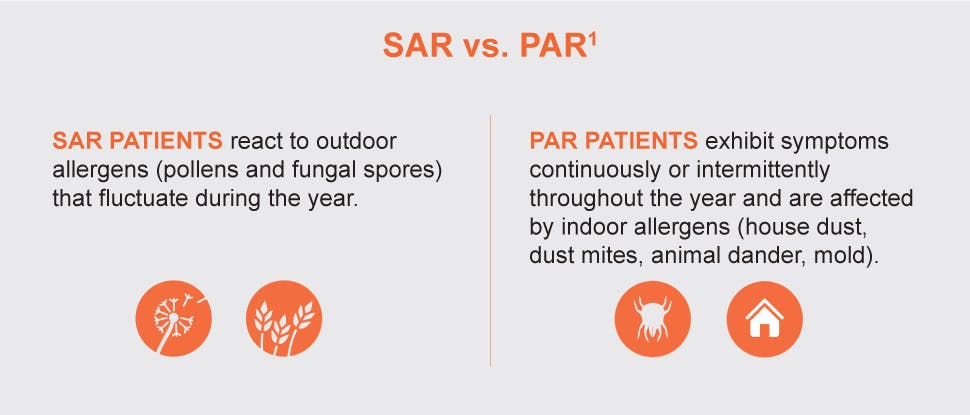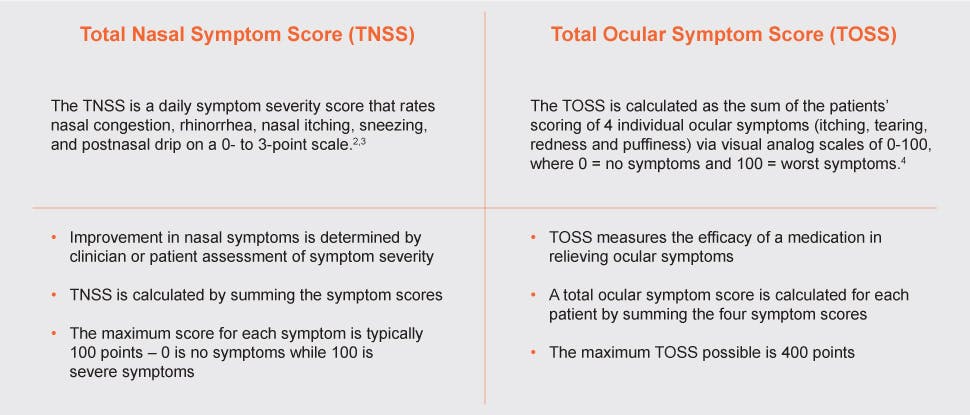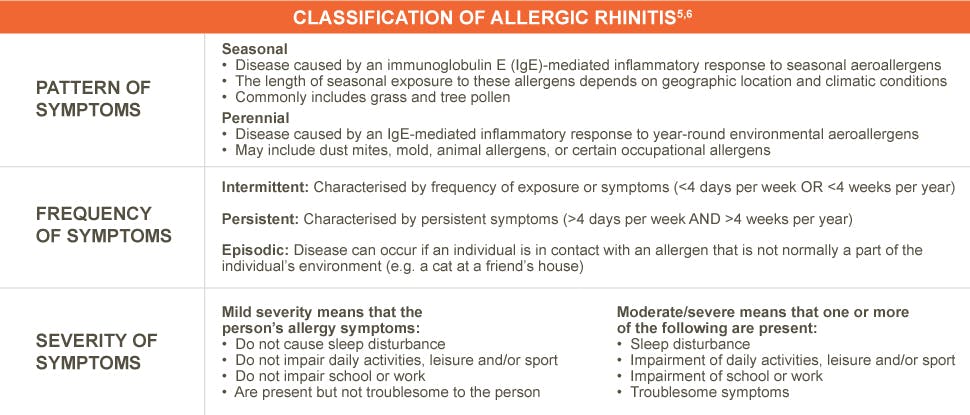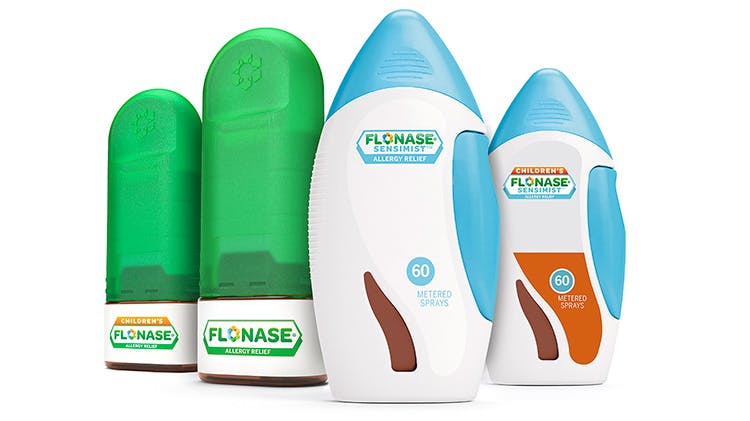Diagnosis

Seasonal allergic rhinitis (SAR) vs perennial allergic rhinitis (PAR)

Allergic rhinitis (AR) can be either seasonal or perennial (i.e., year-round) in duration.1
SAR and PAR can be distinguished based on the allergens that trigger symptoms, by how long the symptoms last, and by what time of year the symptoms occur at.1
There is evidence that PAR patients will require allergy medications throughout the year, while SAR patients will require allergy medications predominantly around pollen allergy seasons: April, May, and June for the spring allergy season and August, September, and October for the fall allergy season.1
Diagnostic tools

Classification of AR

Classification of allergic rhinitis
The accepted classification system for AR now goes beyond seasonal and perennial and includes a new subdivision of intermittent (IAR) or persistent (PER) disease. The severity of AR is classified as mild or moderate/severe depending on symptoms and quality of life.5





